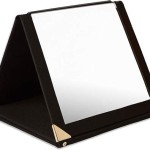How To Screen Mirror Phone to Laptop Wirelessly
Screen mirroring allows users to project their phone's display onto a larger screen, such as a laptop, enhancing presentations, sharing media, and enjoying mobile games on a bigger display. This article explores various methods for achieving wireless screen mirroring between a phone and a laptop, outlining the necessary steps and requirements for each approach.
Using Miracast
Miracast is a built-in wireless display standard found on many modern devices. It allows direct device-to-device connection for screen mirroring, eliminating the need for a third-party app or network. To utilize Miracast, both the phone and the laptop must support the technology.
On the laptop, users typically access the Miracast receiver via the "Connect" app, accessible through the Windows search bar or the Action Center. This app initiates the search for available Miracast devices. Simultaneously, on the phone, the screen mirroring feature, often labeled "Wireless Display" or "Cast," should be activated. The phone should then detect the laptop's Miracast receiver. Selecting the laptop initiates the connection and mirrors the phone's screen.
Troubleshooting Miracast connections often involves ensuring both devices support the standard, have Wi-Fi enabled, and are within close proximity. Updating drivers and operating systems can also resolve compatibility issues. In some cases, specific laptop settings, like enabling "Projecting to this PC," might need adjustment.
Leveraging AirPlay for Apple Devices
For Apple users, AirPlay provides a seamless screen mirroring experience between iPhones, iPads, and Macs. This technology leverages the Apple ecosystem, offering high-quality streaming and low latency. Both the phone and the Mac must be connected to the same Wi-Fi network for AirPlay to function.
To initiate screen mirroring, users need to access the Control Center on their iPhone or iPad by swiping down from the top right corner of the screen. Tapping the "Screen Mirroring" icon reveals available AirPlay devices. Selecting the Mac from the list initiates the mirroring process. The Mac's display will then mirror the content of the iOS device.
Troubleshooting AirPlay typically involves checking the network connection and ensuring both devices are updated to the latest software versions. Occasionally, restarting the devices or resetting network settings can resolve connectivity issues.
Employing Third-Party Apps
Several third-party applications offer screen mirroring capabilities for devices that may not support Miracast or AirPlay. These apps often utilize a local network connection to stream the phone's display to the laptop. Some popular options include ApowerMirror, LetsView, and Reflector.
Typically, these applications require installation on both the phone and the laptop. After launching the app on both devices, the phone will search for available receivers on the network. Selecting the laptop from the list within the phone app establishes the connection and initiates screen mirroring.
When using third-party apps, ensure both devices are connected to the same network. Firewall settings on the laptop might need adjustment to allow communication between the devices. Additionally, consulting the specific app's documentation can provide troubleshooting steps for connection or performance issues.
Utilizing Chromecast for Screen Mirroring to Laptop Browsers
While Chromecast is primarily designed for casting to televisions, it can also be used to mirror a phone's screen to a laptop's Chrome browser. This method requires a Chromecast device connected to the same Wi-Fi network as the laptop and the phone. The Google Home app is needed on the phone to facilitate the connection.
Open the Chrome browser on the laptop and ensure it's logged into the same Google account as the phone. Open a new tab and access the Chromecast settings by clicking the three vertical dots in the upper right corner, navigating to "Cast," and selecting "Cast Desktop." Choose the Chromecast device from the list. Then, open the Google Home app on the phone, select the Chromecast device, and tap the "Cast Screen" option. The phone's screen will then be mirrored to the Chrome browser tab on the laptop.
Troubleshooting Chromecast mirroring usually involves checking the network connection and ensuring both devices are updated. If issues persist, restarting the Chromecast device or the router might resolve connectivity problems.
Choosing the Right Method for Your Needs
Choosing the appropriate screen mirroring method depends on the specific devices and operating systems involved, as well as individual preferences and requirements. Miracast offers a direct connection without the need for a network or third-party apps, while AirPlay provides seamless integration within the Apple ecosystem. Third-party apps offer broader compatibility across different platforms, and Chromecast provides a versatile option using a Chrome browser.
Considering factors such as ease of use, performance requirements, and available features will help users select the most suitable method for their screen mirroring needs. Each method offers unique advantages and limitations, and understanding these differences contributes to a more effective and enjoyable screen mirroring experience.

2024 Updated How To Mirror Android Pc Without Wi Fi

How To Mirror Iphone Windows Pc Laptop Mac Full Guide

How To Screen Mirror Phone Laptop Using Scrcpy Wired Wireless

How To Mirror Your Android Screen Pc Laptop

How To Mirror Android Screen Windows 11 Geeksforgeeks

How To Connect Mirror Laptop Screen On Any Smart Tv Wirelessly No App

5 Ways To Screen Mirror Android Pc Or Laptop New Tech World

Best Ways To Mirror Iphone Pc Via Usb Without Wifi

What Is Screen Mirroring Hp Tech Takes

11 Screen Mirroring Devices For Presenting Wirelessly Computerworld








